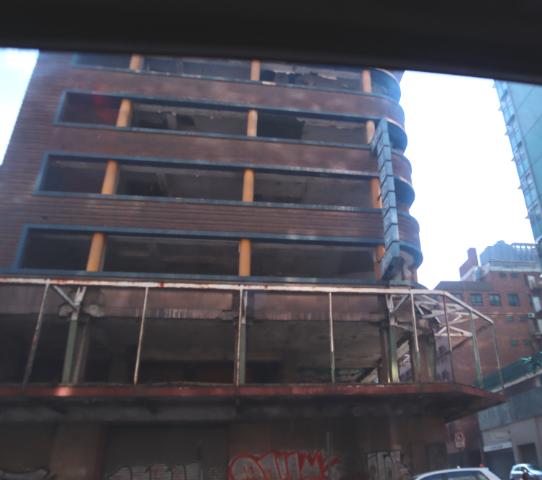
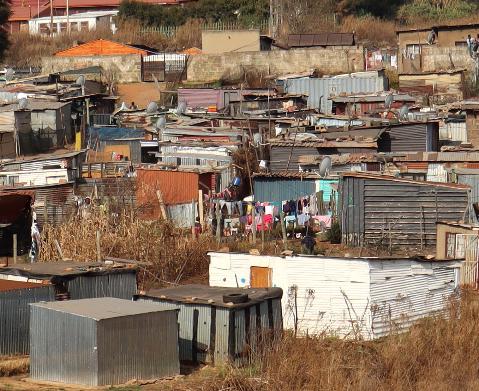
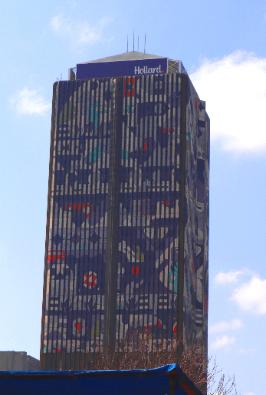
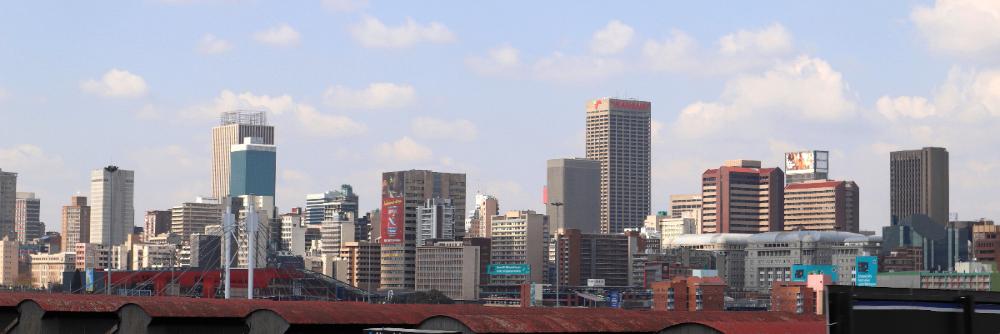
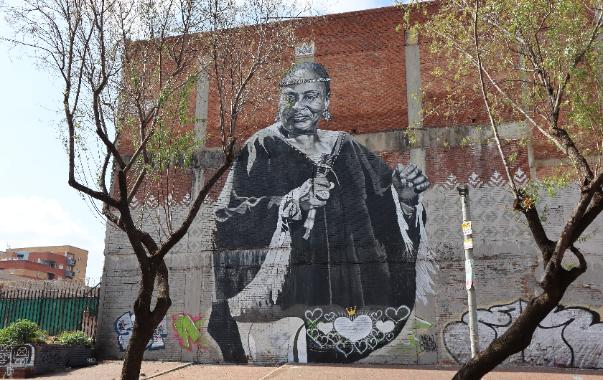



Where We Be
| Our half-day tour of Joburg and Soweto is a last- minute sort of thing but we're so glad we did it |
| Johannesburg & Soweto, South Africa |
| We're struck with how humble the home is with its single small bedroom, one stove for heat, and corrugated roof |
| Today, the house is filled with memorabilia from Mandela's extraordinary life |
| Eleven years later, in 1999, the house was awarded the status of a public heritage site |
| "That night I returned with Winnie to No. 8115 in Orlando West. It was only then that I knew in my heart I had left prison." |
| "For me No. 8115 was the centre point of my world, the place marked with an X in my mental geography" |
| Vilakazi Street is Soweto's most famous. Both Nelson Mandela and Desmond Tutu grew up on this same short street -- and both became Nobel Peace Prize winners. |
| Murals now decorate the old coal-fired Orlando Towers visible from Vilakazi Street |
| Other housing in Soweto appears to fall somewhere in between these two extremes |
| Once we reach Soweto, Charlie first takes us through a surprisingly posh suburban neighborhood, overturning many of our expectations |
| Light shines through gaps in the mosaics at night, creating a dazzling spectacle |
| On the way to Soweto, we pause at FNB Stadium -- designed to look like a traditional African pot (calabash). This was the site of Mandela's first speech in Johannesburg after his release from prison in 1990. |
| The stadium -- the largest in Africa -- can hold up to 95,000 people and has hosted World Cup soccer matches as well as concerts by the likes of Lady Gaga, Justin Bieber, and Ed Sheeran |
| Nearby Chancellor House, the Walter Sisulu House honors leaders of the anti-Apartheid movement |
| Our guide takes us past parts of Johannesburg rarely seen by tourists |
| Street art in Johannesburg |
| "The Shadow Boxer" at Chancellor House pays tribute to Nelson Mandela as a young boxer. Mandela operated the first black law firm here in defense of convicted ‘criminals’ who defied Apartheid. |
| The diamond-shaped building was once the headquarters (not surprisingly) of De Beers, while the Hollard building boasts one of South Africa's largest and most recent artworks |
| The Johannesburg skyline looks impressive from a distance, but some buildings are abandoned or derelict, while others are undergoing refurbishment |
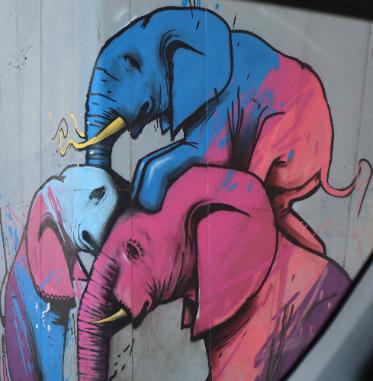
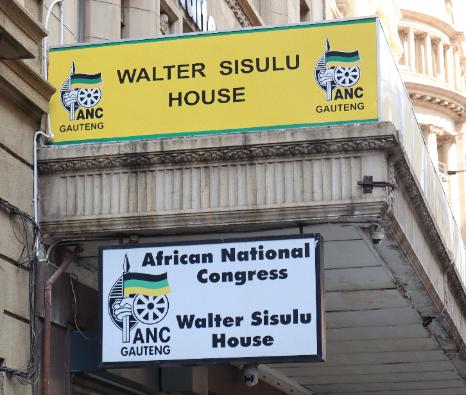
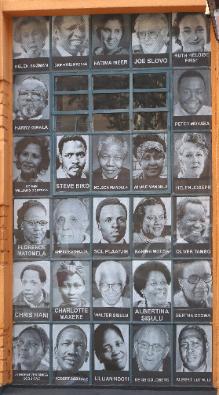
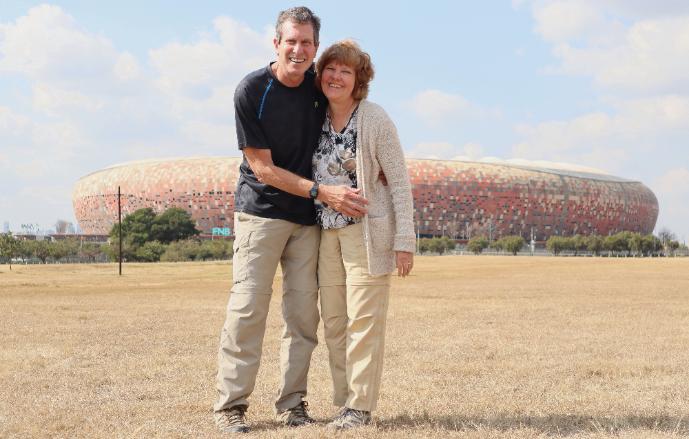

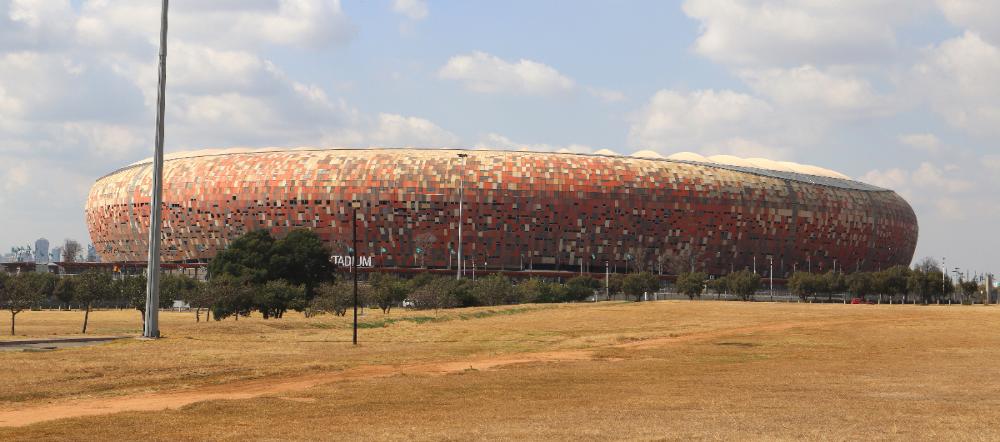
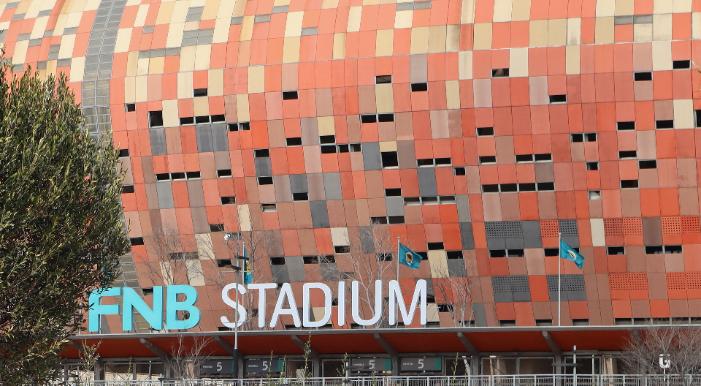
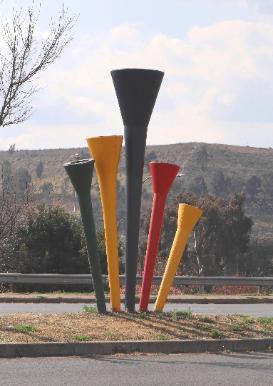

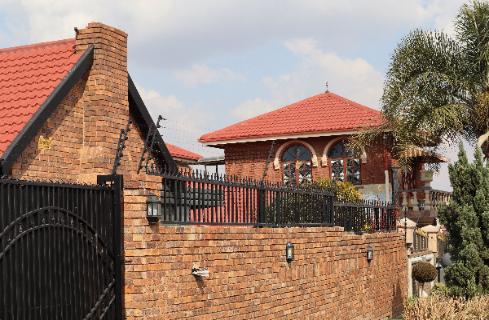
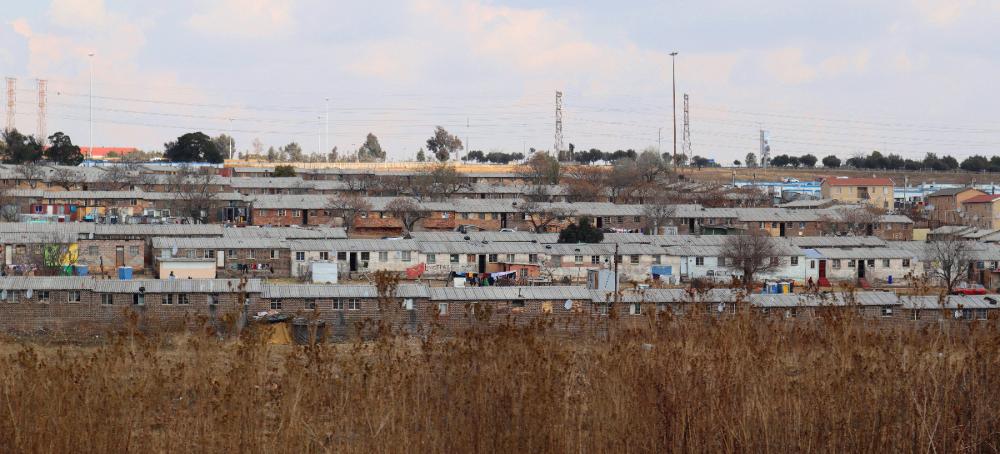
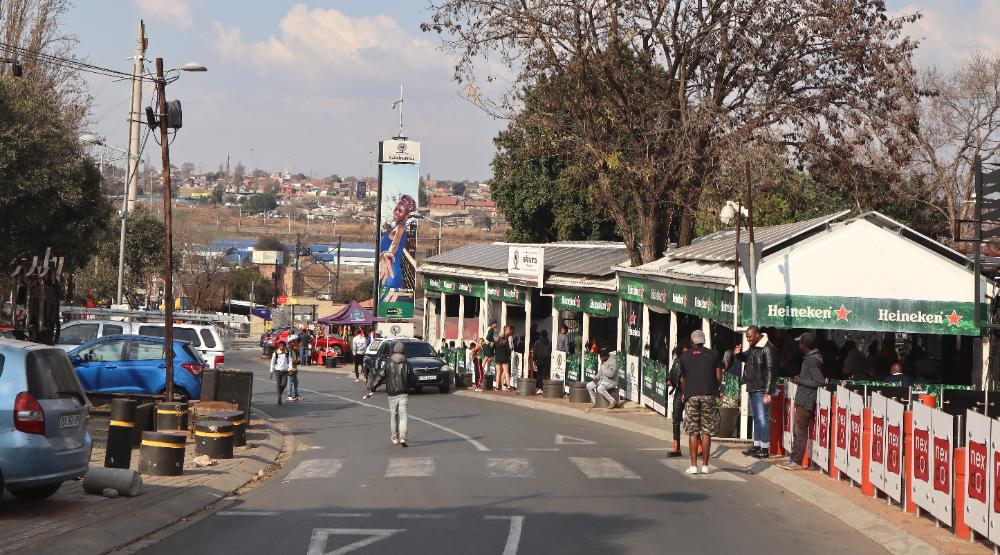
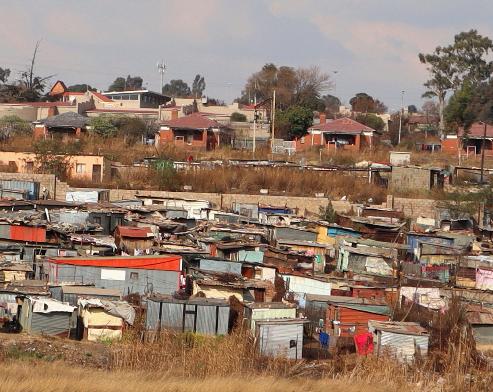
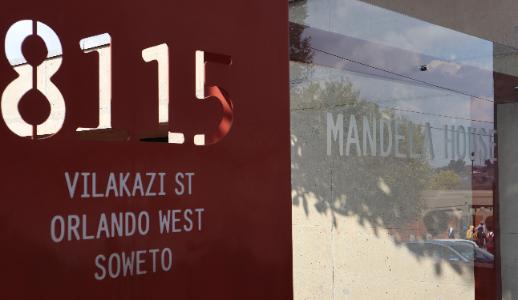
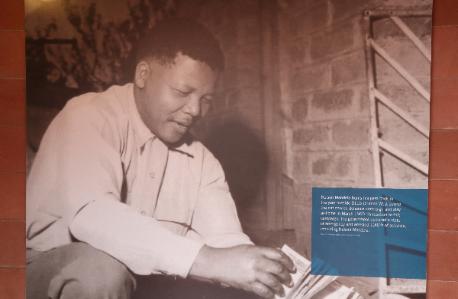

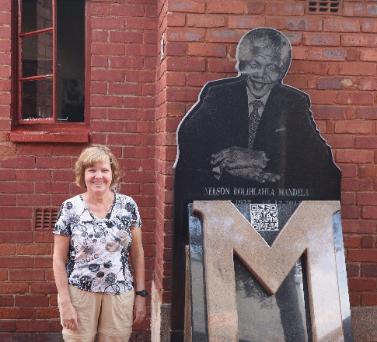

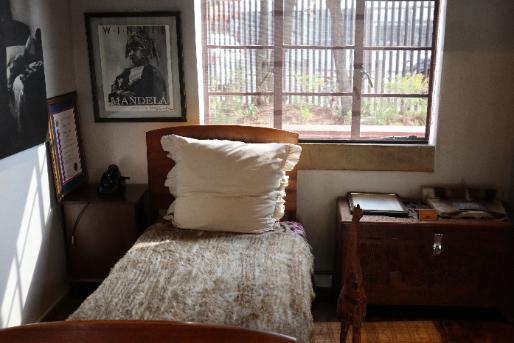

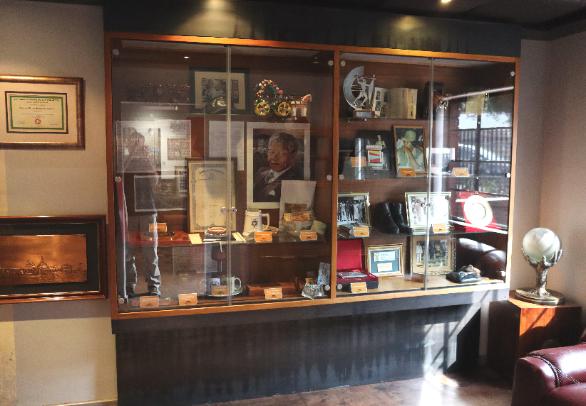
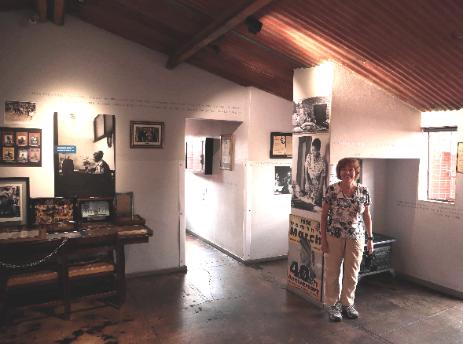
What to do when you have a long wait until your
8 pm flight to the U.S. from Joburg airport? You
could just hang around your hotel lobby -- or
you could take a half-day tour of Johannesburg
and Soweto. That's what we decide to do -- and,
more than just "filling time," it becomes a great
way to finish off our trip to South Africa.
Our guide, Charlie, talks up a storm, teaching
us a lot about Joburg and Soweto. To our sur-
prise, inner-city Joburg feels more dangerous
than Soweto. We learn how one of the tallest
buildings in all of Africa is deserted, along with
other buildings that look impressive from a
distance but are often vacant. And we see with
our own eyes how neighborhoods can change
from one block to the next, with residences in
some neighborhoods hidden behind high walls
and barbed-wire fencing. Soweto, by contrast,
feels unexpectedly suburban and middle-class
in places. There is still a “favela” of corrugated
shacks in one area, but our overall impression
is of a thriving community that is reasonably
safe to visit. Of course we stop to see Nelson
Mandela's home on Vilakazi Street, which for us
is the highlight of the tour (more on that below).
8 pm flight to the U.S. from Joburg airport? You
could just hang around your hotel lobby -- or
you could take a half-day tour of Johannesburg
and Soweto. That's what we decide to do -- and,
more than just "filling time," it becomes a great
way to finish off our trip to South Africa.
Our guide, Charlie, talks up a storm, teaching
us a lot about Joburg and Soweto. To our sur-
prise, inner-city Joburg feels more dangerous
than Soweto. We learn how one of the tallest
buildings in all of Africa is deserted, along with
other buildings that look impressive from a
distance but are often vacant. And we see with
our own eyes how neighborhoods can change
from one block to the next, with residences in
some neighborhoods hidden behind high walls
and barbed-wire fencing. Soweto, by contrast,
feels unexpectedly suburban and middle-class
in places. There is still a “favela” of corrugated
shacks in one area, but our overall impression
is of a thriving community that is reasonably
safe to visit. Of course we stop to see Nelson
Mandela's home on Vilakazi Street, which for us
is the highlight of the tour (more on that below).
| Hollard building seen from a different angle |
| Visible from here is an old power plant cooling tower, now covered in murals |
| Vuvuzela monument outside the stadium |
| But we also drive past corrugated tin shacks, indicating extreme differences in income here |

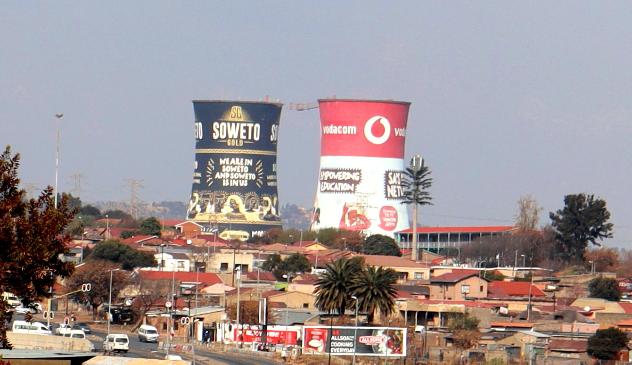

| Monument to Nelson Mandela outside his home |
| In 1988 -- two years before Mandela was released from prison -- the house was burnt to the ground by a fire -- and rebuilt by the community |
| This mural pays tribute to the famous singer Miriam Makeba, nicknamed Mama Africa |
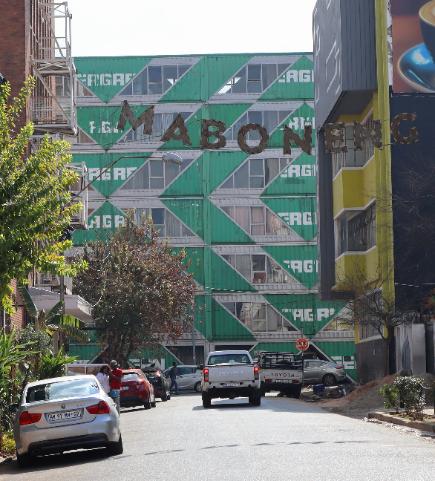
| Apartment building made from stacked shipping containers |